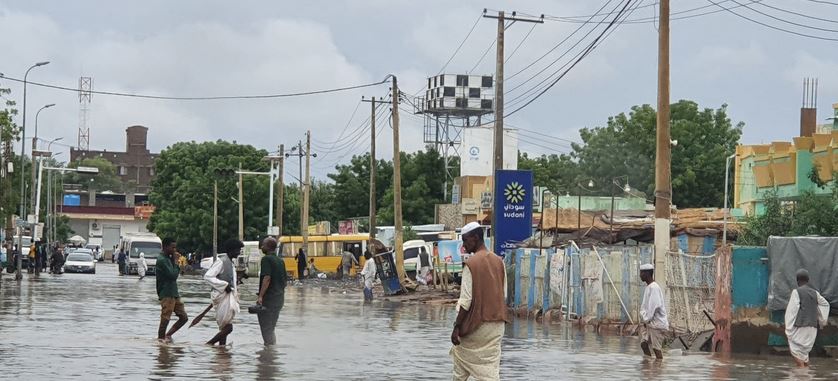The United Nations Office for the Coordination of Humanitarian Affairs on Sunday revealed that initial reports indicate that an estimated 10,180 people, most of whom are newly arrived IDPs from Sudan’s Sennar State, have been affected by recent heavy rains and flooding in Kassala State.
According to a flash update by OCHA, the number could be higher as authorities and humanitarian partners continue with assessment among the host community, refugees, and IDPs who fled to Kassala after the conflict broke out in April 2023.
“At least five people reportedly died. Three of them drowned in the River Gash, while a child died at a displacement site during the night of heavy rains. Heavy rains and flooding have also affected an unspecified number of people and homes in Aroma, Shamal Al Delta, Reifi Kassala, and Gharb Kassala localities,” the update stated. “The newly arrived IDPs from Sennar State were hosted in five gathering sites and reception centers in Kassala town and Gharb Kassala locality.”
Floodwater reportedly submerged tents and water and sanitation (WASH) facilities, as well as roads. The majority of the affected IDPs have been forced to live in the open on the roadsides and they do not have access to food, clean drinking water, or safe sanitation facilities amid heightened concerns of a possible spike in water-borne diseases.
“Priority needs include relocation to shelters and buildings in dryer areas, food, non-food items, and access to safe water and sanitation,” the OCHA update stated. “With heavy rains projected over the coming days, the Gash River water levels may rise leading to further flooding in Kassala town.”
Meanwhile, the International Organization for Migration (IOM) Displacement Tracking Matrix (DTM) reported that on 25 and 26 July 2024, heavy rains, and floods across Aroma town in Reifi Aroma locality, Kassala displaced an estimated 500 people (100 families). IOM DTM field teams also reported that about 100 houses were destroyed, and all affected people sought shelter with host communities within the same locality.
“According to the Kassala Meteorological Department, 118 mm of rainfall was recorded in Kassala, 74 mm in Gharb Kassala locality, and 95 mm in Wad Sheriffe settlement. These are among the highest amounts of recorded rainfall in many years,” the update reported. “The lack of maintenance of the Gash River banks and its tributaries, rehabilitation of irrigation water channels, and lack of repairs of water channels within Kassala town exacerbate the impact of heavy rains on infrastructure. Between 24 and 31 July, about 13.4 million people in parts of western and eastern Sudan were projected to face exceptionally heavy rainfall, according to the IGAD Climate Prediction and Applications Centre (ICPAC). The ICPAC Disaster Operations Centre (DOC) advised communities in flood-prone areas, mainly in Kassala to move to higher ground and exercise caution during this period.”
According to the flash update, the UN and humanitarian partners are working with authorities to move and relocate people from the flooded or inundated sites to dry grounds. Humanitarian partners have provided tents, food, and non-food items, installed temporary water supply and sanitation systems, and are waiting for a decision from the state authorities to identify a suitable site for the relocation of internally displaced people.




